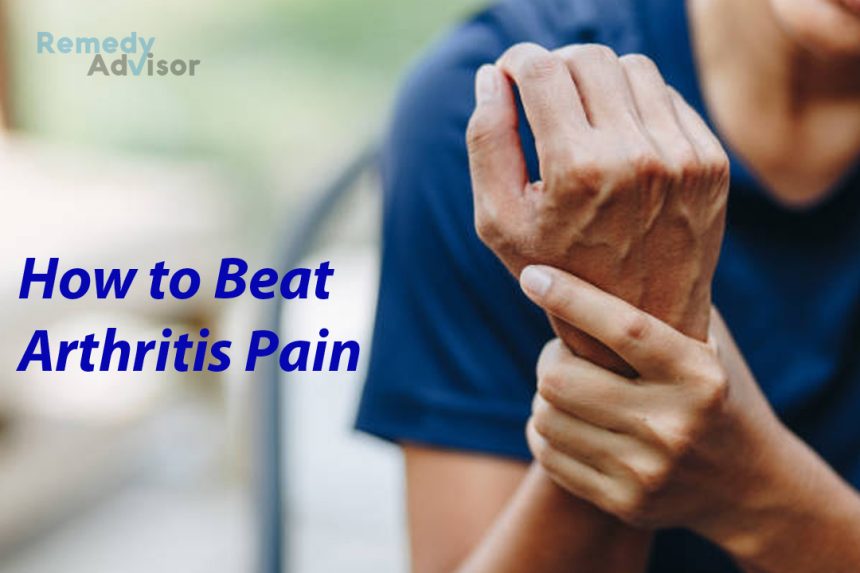About 16 million Americans who suffer from osteoarthritis tend to rely on ibuprofen, aspirin and other non-steroidal anti-inflammatory drugs (NSAIDs) to control their pain.
But NSAIDs do nothing to treat the underlying condition. Consequently, arthritis pain tends to worsen with time. In addition, NSAIDs can trigger a host of troublesome side effects, including digestive problems and high blood pressure.
Worst of all, new evidence suggests that NSAIDs can aggravate arthritis by blocking synthesis of proteoglycans, key molecules that help draw much-needed water into dry, damaged joints.
Breakthrough
The daily use of two nutritional supplements glucosamine and chondroitin controls pain, boosts joint mobility and helps undo the cartilage damage that is the hallmark of osteoarthritis.
Glucosamine and chondroitin work together to block the action of cartilage destroying enzymes promote the flow of water and nutrients into cartilage and boost the activity of cartilage-producing cells called chondrocytes. The supplements have been proven effective in studies around the world
- In a double-blind study conducted in Portugal, 40 arthritis patients were given either 1.5 grams (g) of glucosamine or 1.2 g of ibuprofen a day. Ibuprofen’s pain-reducing effect faded after two weeks. Glucosamine relieved pain for the study’s full eight-week duration.
- A double-blind study of 80 arthritis patients in Milan, Italy, found that 1.5 g a day of glucosamine reduced symptoms by 73% after 30 days. Patients who were given a placebo experienced only a 41% reduction in symptoms.
- In a French study, 120 people with knee or hip arthritis were given chondroitin or a placebo. After three months, the chondroitin group reported significantly less pain than the placebo group.
I can personally vouch for the effectiveness of glucosamine and chondroitin. Five years ago, my osteoarthritis the result of chronic sports injuries became so bad that I was forced to use crutches and a wheelchair.
After a search of the medical literature on arthritis uncovered several references to glucosamine and chondroitin, I began taking both supplements. My symptoms diminished within two weeks and disappeared within four weeks. Several months later, a medical exam revealed that the cartilage in my joints had actually repaired itself.
Using the supplements
Glucosamine and chondroitin are available at drugstores and health-food stores. They’re available without a prescription, but it’s best to use them under the supervision of a sports medicine specialist, a rheumatologist or an orthopedic surgeon.
How much of each supplement should you take every day? That depends upon your body weight. I use these guidelines
Less than 120 pounds: 1,000 milligrams (mg) glucosamine 800 mg chondroitin.
Between 120 and 200 pounds: 1,500 mg glucosamine 1,200 mg chondroitin.
More than 200pounds: 2,000 mg glucosamine 1,600 mg chondroitin.
I tell my patients to divide each dose into halves, taking the first half in the morning, the second half in the evening preferably with food.
As their arthritis pain subsides, I have them reduce the dosage. Symptoms generally begin to diminish within six weeks.
Important: Potent as these supplements are, they are only part of an effective arthritis treatment regimen. Here are the other key components
Antioxidants

Since the cartilage damage associated with arthritis is caused in part by cell-damaging free radicals, I urge my patients to take daily antioxidants. The “ACES” antioxidants are particularly effective at controlling free radicals
- Vitamin A 5,000 international units (IU) a day.
- Vitamin C 4,000 mg a day.
- Vitamin E 400 IU a day.
- Selenium 200 micrograms (meg) a day
It’s also a good idea to eat foods rich in bioflavonoids. These compounds make collagen the tough protein that is a primary constituent of cartilage stronger and less prone to inflammation.
Bioflavonoid sources
Green tea, berries, onions, citrus fruits and pitted fruits, such as cherries and plums.
Regular exercise
Walking, swimming and other forms of exercise are key elements of any arthritis regimen. Exercise boosts production of synovial fluid, the nutrient-rich “broth” that lubricates the joints. It also strengthens the muscles, tendons and ligaments that support the joints extend your range of motion and boost your flexibility.
Challenge: Finding an exercise that won’t trigger additional pain. I often refer my arthritis patients to a physical therapist. He/she can tailor a fitness regimen to suit your specific needs and limitations.
Caution: People who bill themselves only as “personal trainers” often lack the training required to work safely and effectively with arthritis patients.
Body mechanics
Some cases of arthritis are caused by misaligned joints or other “body mechanics” problems. Such problems place undue stress on the joints, causing cartilage to break down.
To identify body mechanics problems, I often ask my arthritis patients to have a biomechanical analysis, which looks at how they walk, work and move about.
A typical analysis involves videotaping your movements and/or using electronic “force plates” to measure forces on the soles of your feet as you walk. Once problem areas are pinpointed, you’ll be shown how modifying your movements can reduce the mechanical stresses on your joints.
Example: A woman with severe arthritis pain in her ankle was told by three different doctors that she had to give up tennis. She was also informed that she needed surgery to stabilize the joint. Her gait appeared normal, but a biomechanical analysis showed that it was putting unusual stress on her right knee, ankle and foot. She spent a few hours learning how to walk correctly and bought a different pair of shoes. Within two weeks, her pain was gone.
Biomechanical analysis is available from sports medicine doctors and practitioners who have completed a fellowship in sports medicine. It costs $100 to $1,000, depending on the equipment used.
Weight loss
Each step you take subjects your knee and hip joints to forces that are 2.5 to 10 times your body weight. That’s why it’s essential to stay slim if you want to control arthritis pain.
Example: The knees of a 200-pound man must bear up to one ton of weight whenever he squats or walks downstairs.
If you’re overweight, take steps to lose the excess weight. If your weight is normal, make sure it stays that way.







